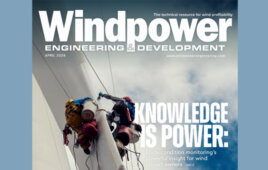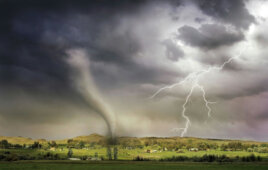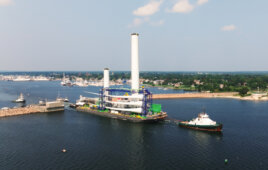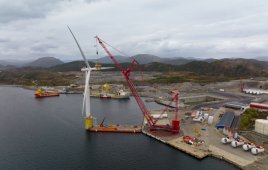Gearboxes are arguably the most important component in wind turbines. Their reliability is paramount, especially as turbines grow in size. OEMs now focus on proper load assessing and ensuring all drivetrain components can function properly.
A better understanding of the loads on a wind-turbine gearbox is one lesson the industry has learned. For instance, the constant pounding of the wind on the rotor and main shaft of older designs slowly hammers away at the gearbox. Higher loads would slowly damage bearings, then gears, and eventually require a gearbox swap. Recent bearing designs now handle much of the loads. The industry is beginning to gain a better understanding of transient loads affecting the gearboxes as well. If these loads, such a transient torque reversals, are not addressed, then bearings in the gearboxes will continue to fail. Recent measurements show torque on main shafts oscillating from positive to negative several times during normal shutdowns.
Early main shaft gearboxes on kilowatt-sized machines were off-the-shelf industrial units with minor modifications. The obvious gearbox trend is that they have gotten bigger with megawatt outputs, and each is designed for its turbine model. Each gearbox is designed for the turbine platform and in collaboration with the OEM. Inside, the slow, high-torque rotor speed is initially stepped up with a planetary stage followed by two more stages. Generally below three megawatts, the second or intermediate stage uses helical gears. But three-megawatt-and-larger turbines need a planetary design in the second stage and a helical stage for the high-speed output. If OEMs continue designing larger turbines, that last stage will also use a planetary design.
One developer of software for gearbox simulations sees a trend to integrate bearings which support the main shaft and rotor into the gearbox. This can have significant advantages and reduce the overall drivetrain size. It also allows reducing gearbox stresses due to high rotor loads.
In addition, the market is seeing more integration between gearboxes and permanent magnet generators. This has advantages in reducing overall size, weight, and cost. In some cases, the number of bearings can be reduced in the drivetrain. The gearbox would consist of just one or two planetary gear stages with no high-speed shaft. The concern with this design is that when failures occur, both units – gearbox and generator – may have to be replaced. WPE
Filed Under: Components, Featured, Gearboxes





